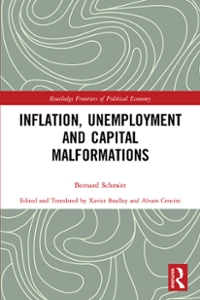Question
Consider an economy with three goods. Suppose that a consumer has a continuous utility function satisfying local non satiation. Suppose also that the consumer's Walrasian
Consider an economy with three goods. Suppose that a consumer has a continuous
utility function satisfying local non satiation. Suppose also that the consumer's Walrasian
demands for goods 1 and 2 when p3 = 1 satisfy
x1(p1, p2, 1, W) = a1 + b1p1 + c1p2 + d1p1p2
x2(p1, p2, 1, W) = a2 + b2p1 + c2p2 + d2p1p2
(a) State Walras' law and use it to find the Walrasian demand for good 3. (It's fine to
just give the demand when p3 =
(b) State a result about the homogeneity of Walrasian demands and use it to find the
consumer's Walrasian demands at other values of p3.
(c) Note that the Walrasian demands for goods 1 and 2 are independent of wealth. Show
that this makes it very easy to find the Hicksian demands for goods 1 and 2. State the
Compensated Law of Demand. Show that this law puts some restrictions on the possible
values for (a1, b1, c1, d1, a2, b2, c2, d2).
(d) Define the Slutsky substitution matrix. What properties must it have if demands
are derived from maximizing a continuous, locally non satiated, and strictly quasiconcave
utility function? Give at least one additional restriction on (a1, b1, c1, d1, a2, b2, c2, d2) that
this implies.
4. (25 Minutes - 23 points)
Let X = {x1, x2, . . . , xn} be a finite set of states. Let ?(X) be the set of lotteries with
outcomes in X. Write ?xi for the lottery in which xi is realized with probability one.
Let P be a preference on ?(X). Assume that P is transitive and that ?x1 P ?x2 P
. . . P ?xn .
(a) State the Archimedian axiom.
(b) The preference P is said to satisfy monotonicity if a?x1 +(1?a)?xn P b?x1 +(1?
b)? if and only if a ? b. Show that monotonicity implies that ? ?xn x . n x1 P




Step by Step Solution
There are 3 Steps involved in it
Step: 1

Get Instant Access to Expert-Tailored Solutions
See step-by-step solutions with expert insights and AI powered tools for academic success
Step: 2

Step: 3

Ace Your Homework with AI
Get the answers you need in no time with our AI-driven, step-by-step assistance
Get Started


